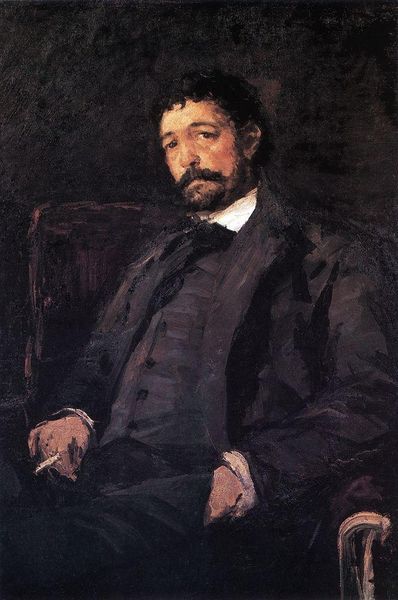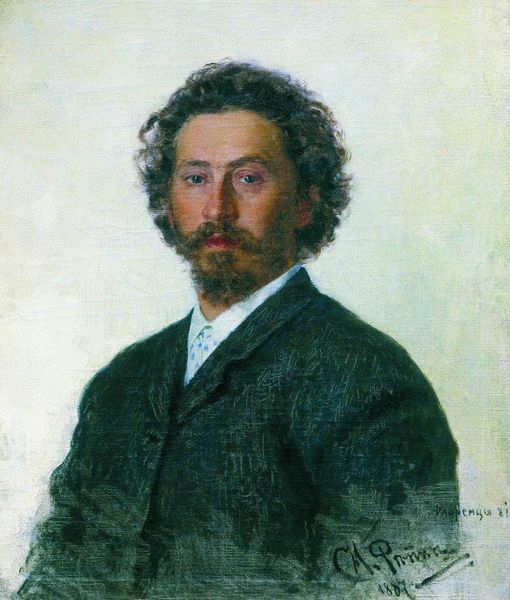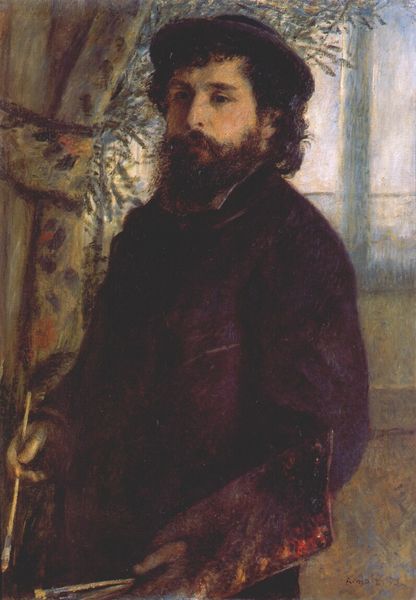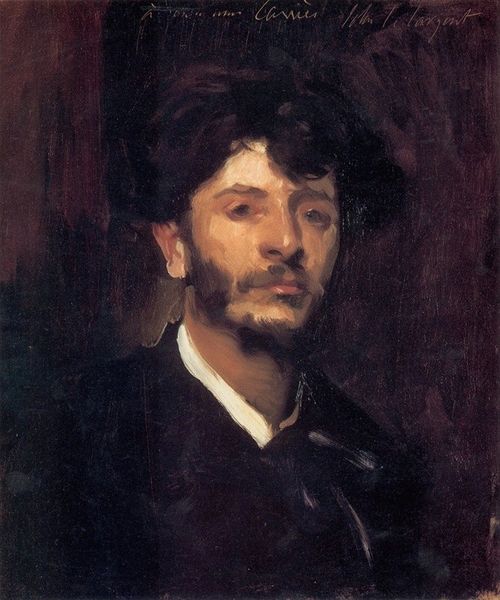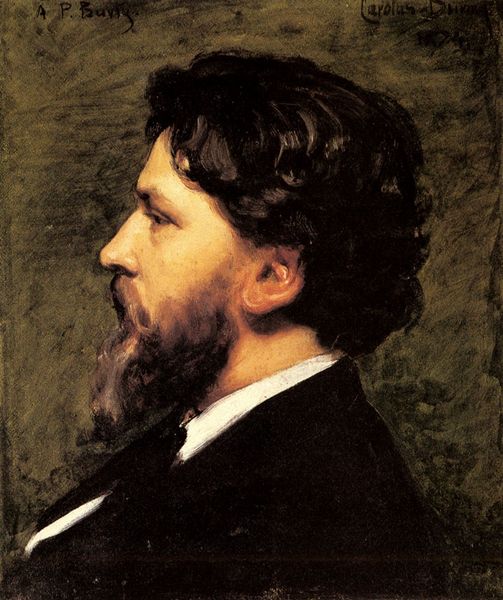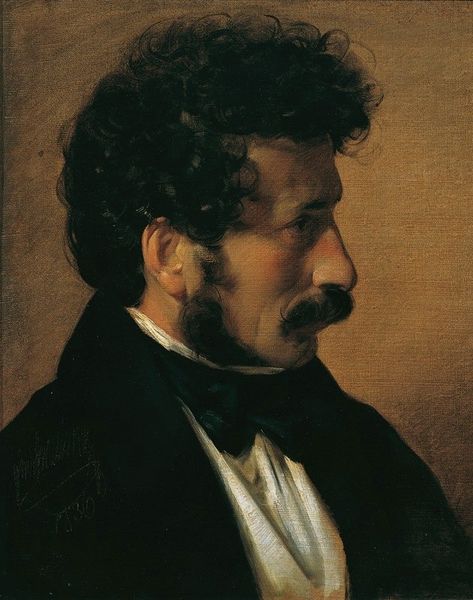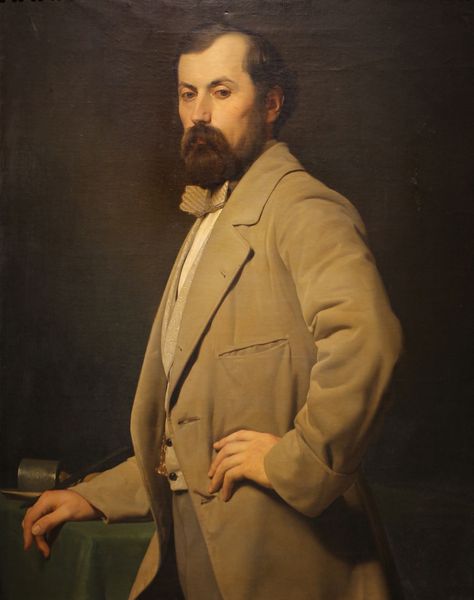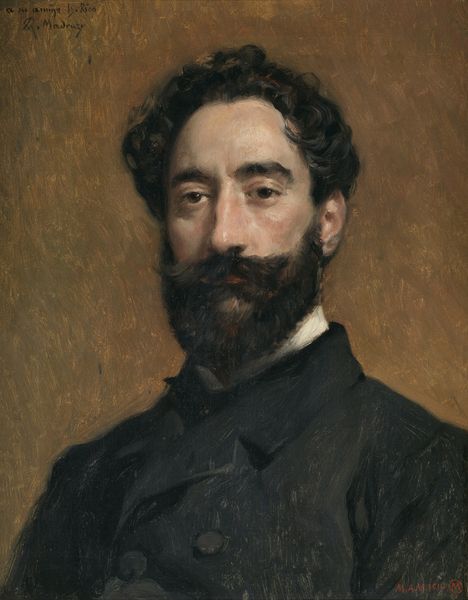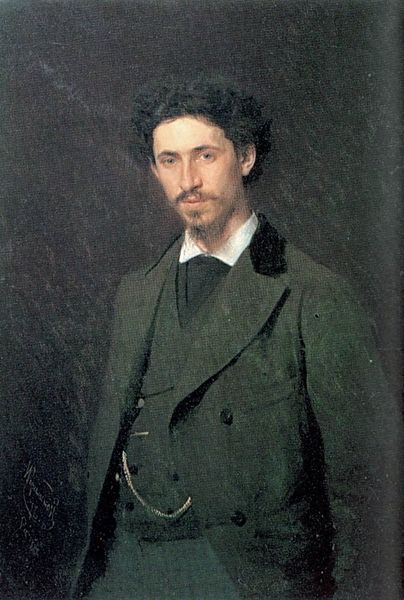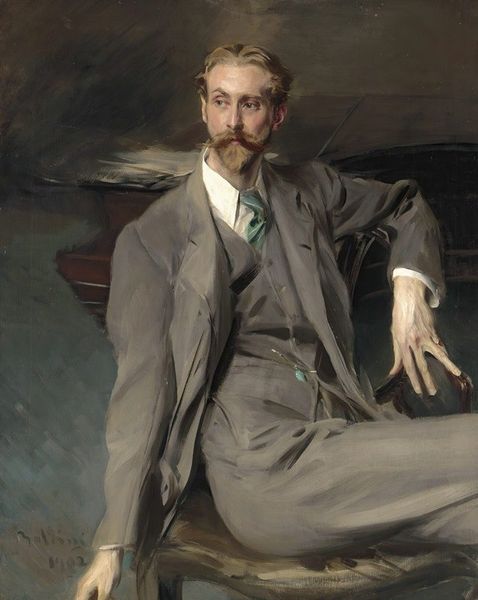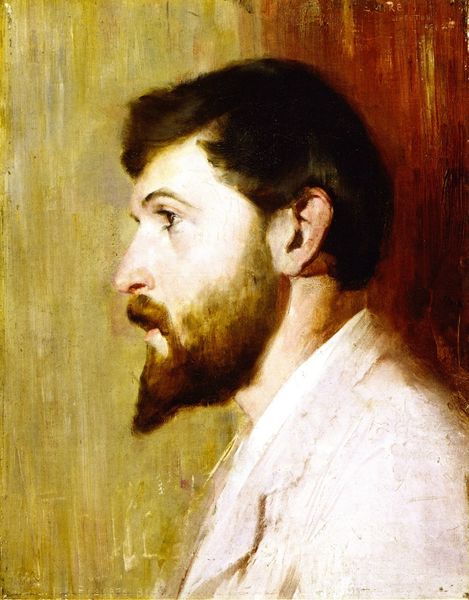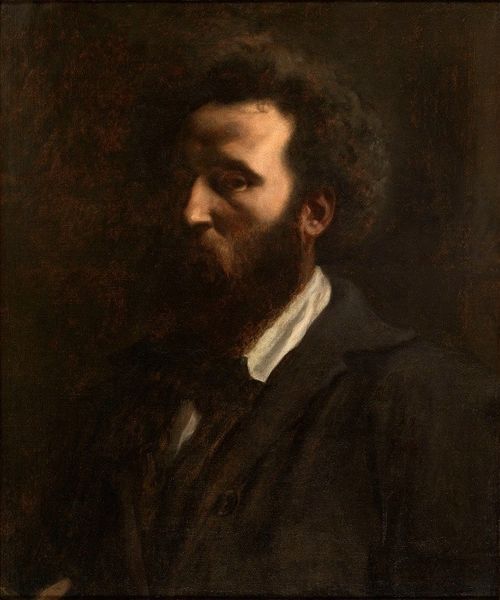
painting, oil-paint
#
portrait
#
painting
#
impressionism
#
oil-paint
#
realism
Dimensions: 116.8 x 95.8 cm
Copyright: Public domain
Curator: John Singer Sargent’s *Portrait of Carolus-Duran* from 1879 hangs before us, an oil painting currently residing here at the Clark Art Institute. What strikes you first about it? Editor: The mood. It's remarkably self-assured, almost theatrical, wouldn't you say? There's an undeniable confidence radiating from Duran, as though he’s inviting you to admire his flair. Curator: Precisely! It’s bravura portraiture at its finest, a real celebration of his teacher and mentor. What's fascinating to me is the effortless way Sargent captures Duran’s commanding presence. Note the composition: Duran is positioned slightly off-center, leaning jauntily to one side. Editor: I love how the loose brushwork around the edges sharpens into almost photographic detail on his face, that magnificent beard. There’s a certain immediacy that captures the eye—he almost feels alive. It is more than merely a likeness. Curator: Sargent understood that a portrait is never merely a likeness. It's an interpretation, a collaboration between artist and subject. The inscription at the upper edge says it all really: "A mon cher maître M. Carolus-Duran, son élève John S. Sargent". This isn’t just a portrait, but a declaration of gratitude and influence. The way Sargent renders the light –soft yet precise– really guides us. Editor: Speaking of influence, I see a clear lineage. Duran's influence on Sargent is clear but so too is Velazquez! I almost imagine Velazquez is beaming approvingly from beyond the grave! There's something of a performance woven into the work's DNA. Curator: Exactly, both men really looked to and transformed the artistic styles that came before. Think of the broad strokes, the confident handling of light and shadow. Sargent isn’t simply copying his master; he's engaging in a dialogue, pushing the boundaries of portraiture. The subdued color palette, mostly browns and grays, feels deliberately restrained, which allows the focus to be on the face. Editor: So what is the real appeal of this work then? A homage or more? It serves as a reminder of art's intrinsic ability to record the subtleties of relationships, admiration, and aesthetic legacy—much like gazing into the artistic process itself. It captures that magical transfer of artistic prowess from mentor to pupil! Curator: Beautifully said! And it reminds us that, behind every great artist, there are teachers and influences that have helped shape their vision. It serves as a record of not just a man, but also the mentorship itself, and that's its enduring magic for me.
Comments
No comments
Be the first to comment and join the conversation on the ultimate creative platform.
